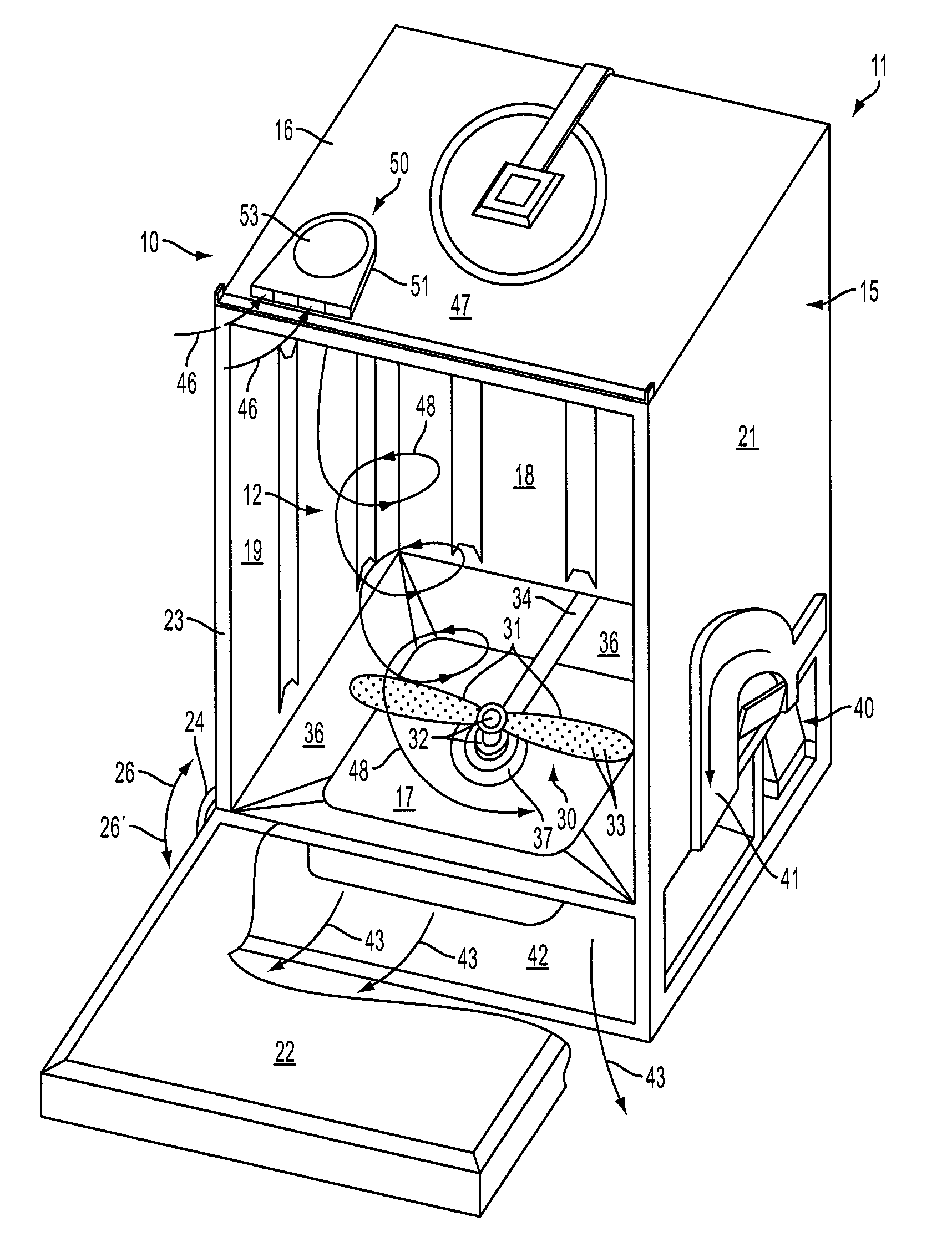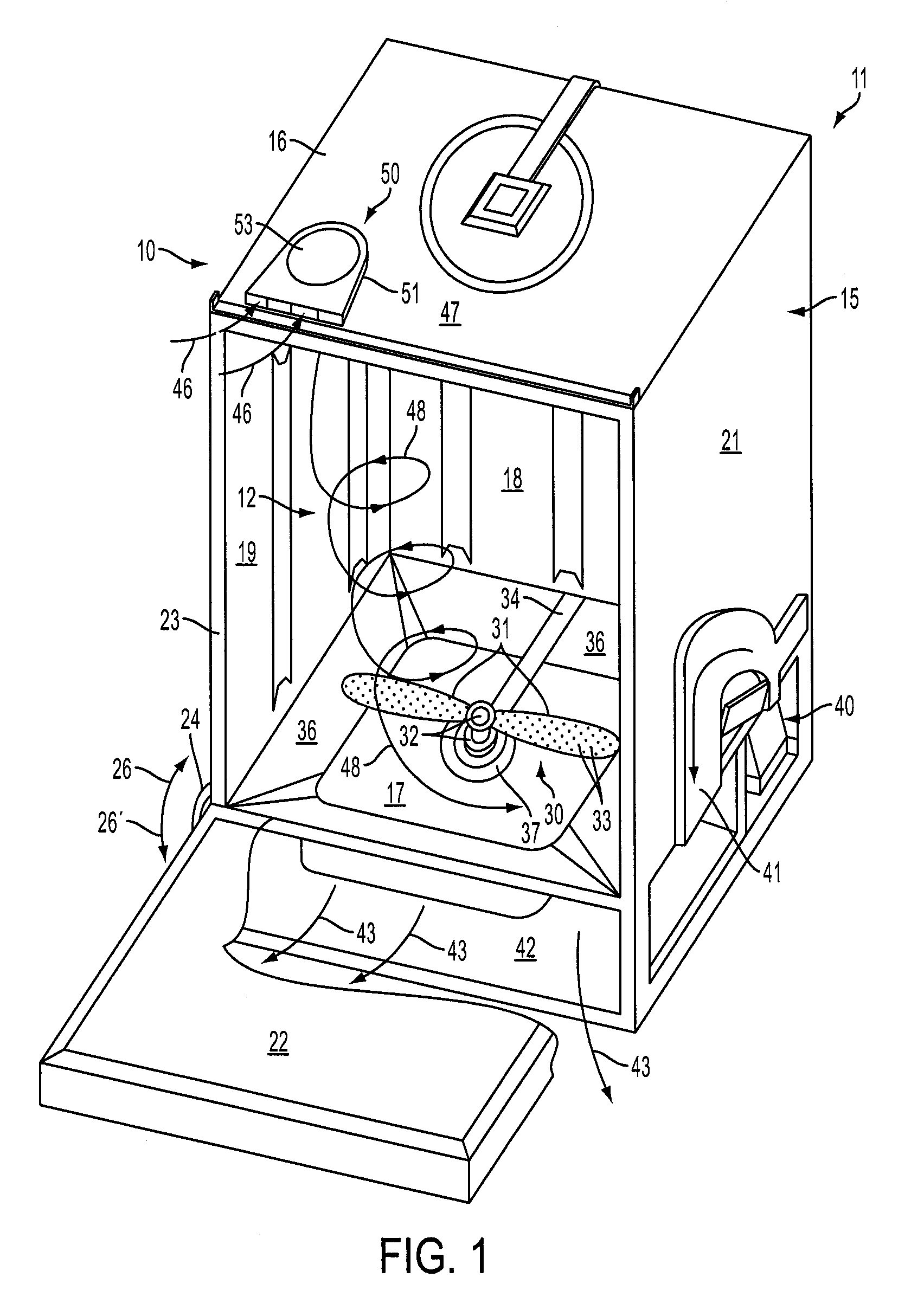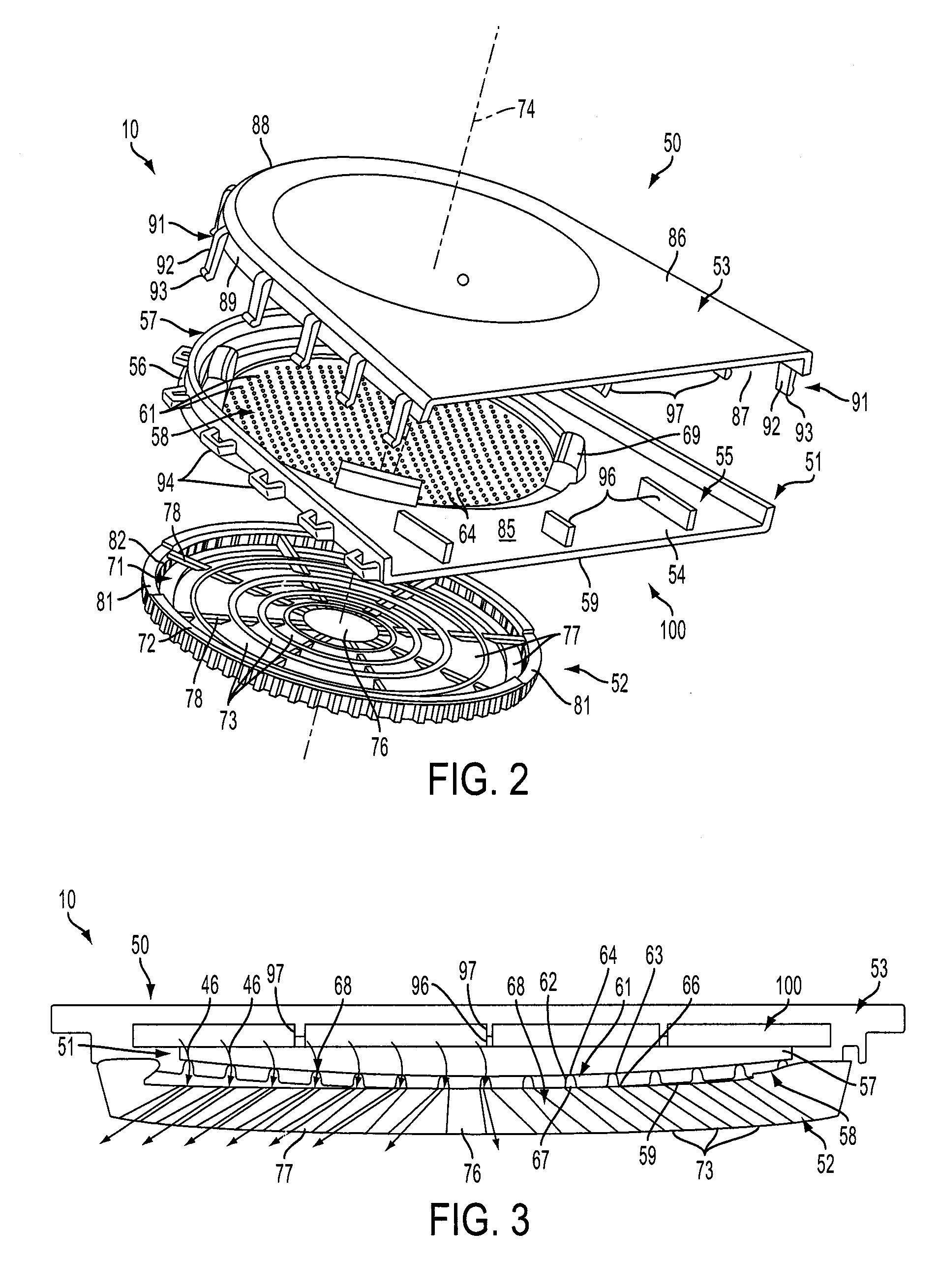Drying system for a dishwasher
a drying system and dishwasher technology, applied in the field of dishwashers, can solve the problems of increasing the operation time, consuming more energy, and consuming significant amounts of energy for water heating and drying cycles, and achieves the effects of promoting more turbulence, rapid condensation of water, and fast condensation of moistur
- Summary
- Abstract
- Description
- Claims
- Application Information
AI Technical Summary
Benefits of technology
Problems solved by technology
Method used
Image
Examples
Embodiment Construction
[0020]Referring now to the drawings in which like numerals indicate parts throughout the several views, FIG. 1 generally illustrates a drying system 10 for a dishwasher 11, for facilitating the rapid and efficient drying of dishes within the wash chamber 12 or tub of the dishwasher, without requiring additional power for its operation. The drying system of the present invention is designed to provide enhanced air flow through and across the wash chamber to aid in the rapid drying of dishes therein, while reducing or substantially eliminating flash drying or spotting on the dishes.
[0021]As illustrated in FIG. 1, the dishwasher 11 generally includes a cabinet 15 having a top wall 16, a bottom 17, a rear wall 18, and side walls 19 and 21. The top, bottom, rear and side walls of the cabinet define the open ended wash chamber or tub 12 in which dishes are received, typically on racks (not shown) for cleaning. A door 22 generally is pivotally mounted to the open front side 23 of the dishw...
PUM
 Login to View More
Login to View More Abstract
Description
Claims
Application Information
 Login to View More
Login to View More - R&D
- Intellectual Property
- Life Sciences
- Materials
- Tech Scout
- Unparalleled Data Quality
- Higher Quality Content
- 60% Fewer Hallucinations
Browse by: Latest US Patents, China's latest patents, Technical Efficacy Thesaurus, Application Domain, Technology Topic, Popular Technical Reports.
© 2025 PatSnap. All rights reserved.Legal|Privacy policy|Modern Slavery Act Transparency Statement|Sitemap|About US| Contact US: help@patsnap.com



